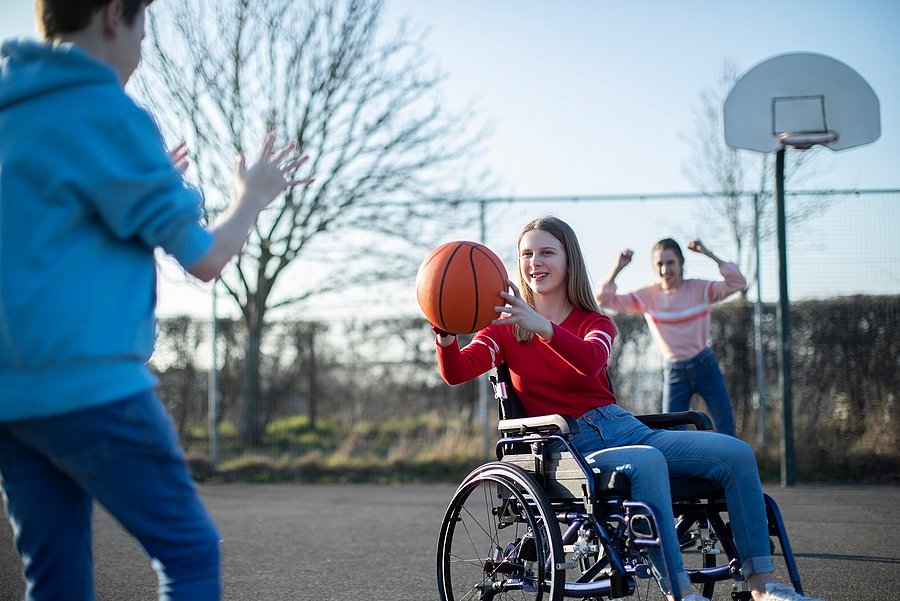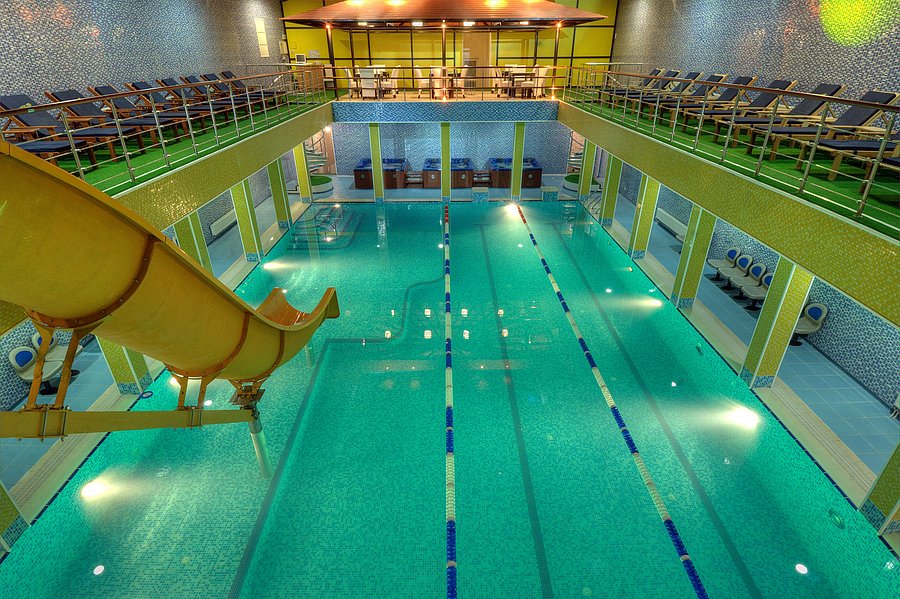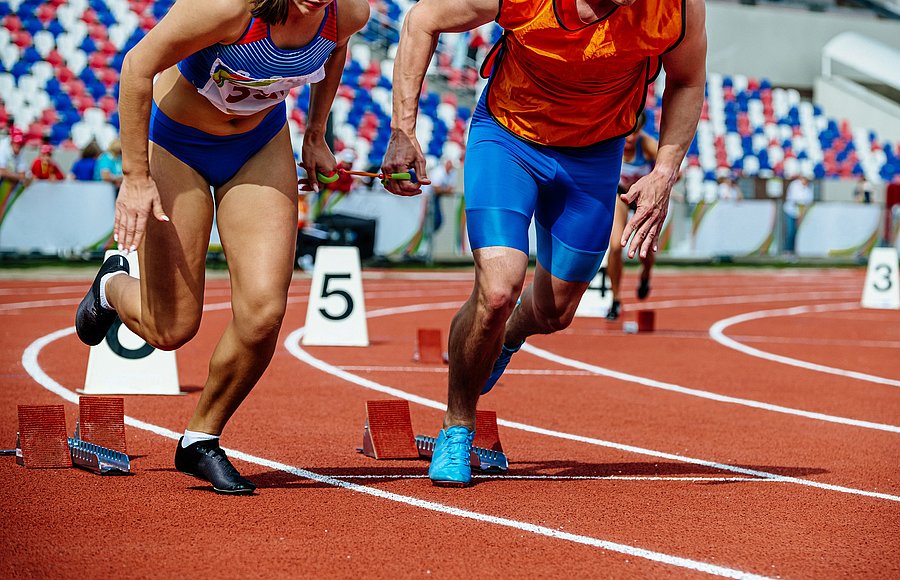For more participation
Accessibility: researchers at the University of Wuppertal are working on a certificate for sports facilities

Sport brings people together - so it's all the more important that everyone can take part. // Photo Colourbox
There are various guidelines and practical aids that contain information on the accessibility of sports facilities. Their aim is to create the basic conditions for the self-determined and equal participation of people with disabilities in sport. Dr Jonas Wibowo from the University of Wuppertal and his team from the field of sports education have collected this information and made it the basis of their research (see also info box "Important preliminary work"). The problem is that the wealth of existing criteria in current guidelines is almost impossible to implement in practice. This in turn poses challenges for the development of municipal sports and sports facilities, regardless of whether they are being renovated or new buildings are being planned. "When assessing whether a sports facility and its facilities are barrier-free, everyone involved is currently coming up against limits. One of the reasons for this is that the needs of the various groups affected vary greatly. Data on local conditions is not systematically recorded and there is little helpful information available to provide users of sports facilities with information on the status of accessibility," explains Wibowo. Furthermore, there are no empirical studies on which people with disabilities actually perceive which barriers on site.
Together with its practice partner beratungsPUNKTsport, the sports scientist and his team are tackling the issue in the "ZertSportstätten" research project: The overall aim of the project is to develop an information system to certify the spatial accessibility of sports facilities and to have it tested by the German Accreditation Centre (DakkS).
Important preliminary work for the certificate
The information system that the Wuppertal sports scientists want to develop in the "ZertSportstätten" project is based on the findings from an analysis of the numerous guidelines, practical aids and DIN standards available on the subject. From the 1,549 criteria collected, they have filtered out those that can be measured in a standardised way. In addition to corridor width, these include, for example, whether the room temperature can be regulated, whether the colours of doors and walls have sufficient contrast and whether background noises such as motorways near sports grounds or the humming of air conditioning units in the hall interfere with hearing. They are currently testing this in the parallel "NoBars" project, which is funded by the Federal Institute of Sports Science, on site in municipal sports halls, sports grounds and swimming pools. This allows them to collect standardised data about the respective location.
"Of course, there are currently too many criteria to process them in a user-friendly way, whether for sports facility planning or for visitors and sports enthusiasts," says Wibowo. The key question for the researchers is therefore: What information do people actually need to decide whether they can use a sports facility or not? To answer this question, Wibowo and his team are not alone during the on-site visit. They are accompanied by people with different impairments. Wibowo: "This is important so that we can find out which criteria we need to prioritise in the future when assessing accessibility, i.e. also for the development of a certificate, and which can be neglected." It is likely, for example, that two coat hooks at different heights are less important than the ability to first find and then reach changing rooms and sports areas.
Complex initial situation
In the parallel "NoBars" project, the researchers have already defined eight so-called room characteristics for which they are currently collecting measurement data in sports facilities in the city of Wuppertal: "signage", "accessibility", "contrasts", "climate", "light and shade", "(dis)order", "usability" and "acoustics". It quickly becomes clear that the needs of the people affected are very heterogeneous. In their research, the sports scientists therefore also differentiate between different forms of impairment. For their system, they look at the areas of vision, hearing, movement and cognition. People without impairments form a comparison group. In addition, the aim is to define the most important information for each spatial characteristic and form of impairment and to make it meaningful.

Everything within reach, everything recognisable? Too dark or is the light dazzling? How are the paths in the building? What background noise is generated? Many factors play a role when it comes to the spatial accessibility of a sports facility // Photo Colourbox
Realisation in practice
One vision of the current project: "If a hall is due for refurbishment in the future, planners in local authorities, for example, could use our clear information system and view the scientifically verified criteria that should be taken into account with regard to spatial accessibility," explains Wibowo. The project is also pursuing a higher goal: in cooperation with the German Accreditation Centre, the research group wants to develop the information system in such a way that it can lead to a certificate for sports facilities. The team is developing what this will ultimately look like in an open-ended way: "It is conceivable, for example, that at the end there will be a tiered system - similar to the Nutri-Score, the traffic light system for evaluating food - with which we can determine what percentage of the criteria a sports facility fulfils for the respective room property," summarises the scientist.
The innovative aspect is the summarisation of the information in the aforementioned room properties: In comparable systems, the focus is primarily on groups of people. "As they are so heterogeneous in their needs, it is sometimes difficult for users to evaluate a sports facility based on a statement such as 'Is barrier-free for people with hearing impairments'," explains Wibowo. Statements based on room characteristics, e.g. "Is barrier-free in terms of signage" (contrasts, acoustics, etc.), allow for much more differentiated judgements based on personal needs.
Call for participation in inspections
Co-researchers are currently being sought for the NoBars project to walk around sports facilities. People with visual, hearing, mobility or cognitive impairments walk around a sports facility and describe which spatial characteristics they perceive as hindering or beneficial. The data collection takes place in the Wuppertal area. If you are interested or have any questions, please contact Ulrike Grünzel-Spindelmann from the NoBars project team (gruenzel[at]uni-wuppertal.de). The cooperation is remunerated by an expense allowance.

Whether it's popular or elite sports, intact and accessible sports facilities are needed to enable fun through sport and sporting performance // Photo Colourbox
Despite tight budgets: Adaptations are possible
In view of the fact that sport has long been more than just a leisure activity, it creates encounters, connects society and brings people together regardless of age, social class and culture, with and without disabilities. This also applies to the promotion of elite sport, e.g. in preparation for the Paralympic Games, which are now starting in Paris. However, many sports facilities are as they were 50 years ago - dilapidated, in need of renovation and not barrier-free. In many places, tight local authority budgets are preventing overdue modernisation measures. "With our research, we also want to show that important adaptations can be implemented cost-effectively," says Wibowo, who is aware of the refurbishment backlog. Some room features, such as signage and contrasts, could be improved easily and even independently. However, the city and its sports facilities are not the only target group for the project. Initial discussions indicate great interest on the part of fitness centre operators. "This type of certification could be a valuable service for customers in the future, especially at the individual sports level," says Wibowo, looking ahead.
The "ZertSportstätten" project at the BUW is being funded by the Federal Ministry of Education and Research with around 177,400 euros as part of the DATI Pilot funding line.
